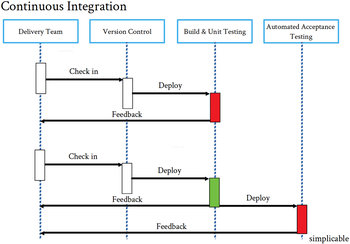Scrum Project Managment Guide
| |
A self-organizing team is a team that is managed according to what they deliver without management interference as to how delivery is achieved. It is associated with small teams of knowledge workers who are trusted to self-manage. Self-organization tends to function best when teams embrace a particular team culture such as agile. Elements of team culture such as norms, expectations and habits may allow a team to function without need of a hierarchy that places people in charge.
|
Type | | Definition | A team with no managers that interfaces with an organization using a set of principles, conventions and expectations. | Value | Eliminates management overhead potentially speeding up high performance teams.
May increase motivation for individuals who are strongly self-motivated. | Notes | Associated with small, high performance teams of knowledge workers who are trusted to self-manage themselves without much oversight. They are typically directed what to deliver by the management structure of an organization and evaluated on delivery.Requires that teams have access to HR support to prevent abuses and compliance issues.Typically requires a strong team culture and set of principles to guide expected behavior.Teams may be required to submit to an organization's performance management processes. | Related Concepts | |
Agile
This is the complete list of articles we have written about agile.
If you enjoyed this page, please consider bookmarking Simplicable.
An overview of agile principles new and old.
A list of basic scrum techniques and conventions.
The difference between a methodology and a body of knowledge.
The common types of agile planning.
A complete guide to continuous delivery including a process overview and comparisons.
The difference between continuous integration and continuous delivery explained.
An overview of agile change management with examples.
A list of planning reduction techniques for business.
A list of common project risks.
A list of basic project management techniques.
A definition of workaround with examples.
A list of project branding techniques.
An overview of project stakeholder management with examples.
A definition of action plan with examples.
The primary types of cost overrun.
The definition of document control with examples.
A guide to project oversight.
A definition of design driven development with examples.
TrendingThe most popular articles on Simplicable in the past day.
Recent posts or updates on Simplicable.
Site Map
© 2010-2023 Simplicable. All Rights Reserved. Reproduction of materials found on this site, in any form, without explicit permission is prohibited.
View credits & copyrights or citation information for this page.
|





























